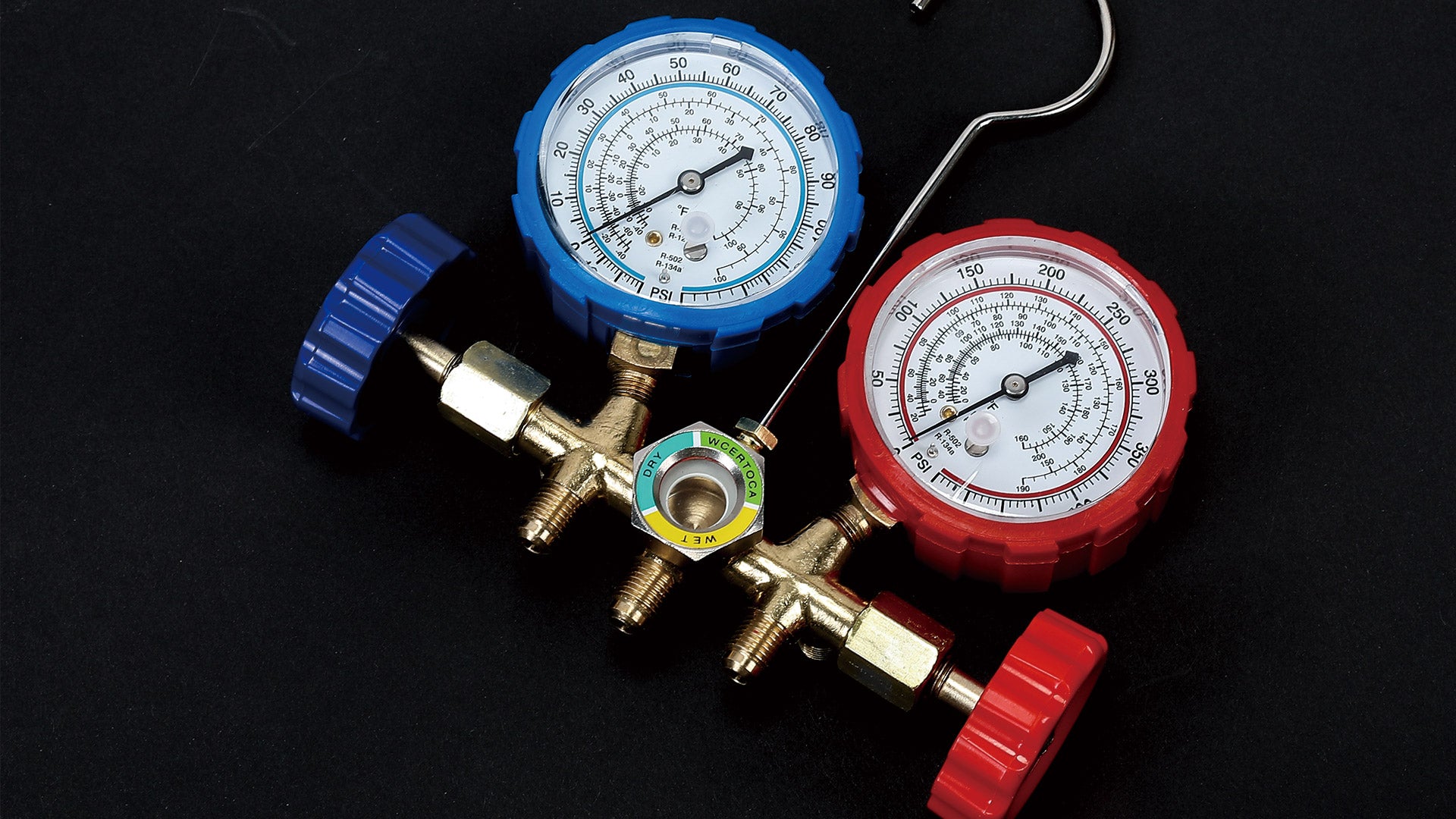For people who don't want to waste money on going to an auto repair store to repair their air conditioning system, an A/C manifold gauge set is a must-have tool. It is mainly used to check the pressure of the air conditioning system, detect the presence of leaks, add refrigerant or recover refrigerant, etc. While professional technicians usually use more specialized - and expensive - machines to complete the AC system maintenance, you can achieve similar results with inexpensive equipment in your home backyard.
In this guide, we'll show you how to use/ read the A/C manifold gauges.
You need to know the type of refrigerant in your vehicle before using an A/C manifold gauge set to avoid mixing different refrigerants that can cause damage to your A/C system, service tools and equipment. If you need to maintain multiple vehicles, and the refrigerants are all different, it is a good idea to purchase multiple AC manifold gauges to work on the different refrigerants in the system.
The left side (blue) of these A/C manifold gauges is the low side and the blue gauge is the vacuum/pressure gauge. The right side (red) is the high side and the red gauge is the high pressure gauge.
We can check the pressure and vacuum readings with the low side and high side gauges. The valve body interconnects all three connections through internal channels and valves. The yellow hose in the middle is used to refill the air conditioning system with refrigerant and can also be used for vacuum pump evacuation.
Now you know the basic components of an air conditioning manifold gauge, then you can start trying to use this device.
NOTE: If the gauge reading is not 0 psi, remove the pressure surface and adjust the calibration screw to 0 psi
NOTE: Never open the high pressure side valve on the manifold gauge while the air conditioning system is running.
How to use the A/C manifold gauge to test if the A/C system is working properly?
- Close the manual service fitting and all valves on the manifold gauge set. Connect the high end coupler to the high end port and the low end coupler to the low end port. (All valves are in the closed position before connecting to the A/C system.)
- Start the A/C system and allow the A/C to run continuously until the manifold gauge reading is stable.
- Check the manifold gauge readings and compare the readings to the normal operating pressure range specified in the service guide.
If the high pressure gauge is too high, it may be due to too much refrigerant in the air conditioning system, air in the lines, etc. A low reading may be due to too little refrigerant or a faulty compressor. If the low pressure gauge is too high, it may be due to too much refrigerant charge or a faulty compressor. A low reading may be due to a restriction on the low pressure side of the air conditioning system, a low refrigerant level, or insufficient airflow through the condenser.
How to charge the air conditioning system?
If you notice that the cooling capacity of your air conditioning system is decreasing over time and using a manifold pressure gauge shows that the pressure is low on both the low and high pressure sides. Then you just need to add a small amount of refrigerant to bring the pressure back to normal and the air conditioner will work normally again.
Note: Both the vehicle engine and air conditioning system must be turned off
- Make sure that the refrigerant source distribution valve and the manifold gauge valve are closed
- Connect the high and low couplers to the appropriate service ports of the air conditioning system and turn them on
- Open the valve of the refrigerant source
- Open the low pressure valve on the manifold gauge
- Charge the refrigerant until the pressure gauge reading reaches the normal pressure in the service guide
- Close the low-pressure valve on the manifold gauge
- Close the valve to the refrigerant source
How to completely evacuate and recharge an air conditioning system?
If the refrigerant level in the air conditioning system is very low, then first diagnose and repair any leaks in the air conditioning system. Some professionals prefer a complete "evacuation and recharge". If you choose to do this, then you will still need an electric vacuum pump.
- Recover all refrigerant using appropriate recovery equipment and do not vent the refrigerant to the atmosphere
- Connect the blue and red hoses to the low and high pressure side service ports respectively. Connect the yellow hose to the middle port of the center manifold and connect to the vacuum pump
- Open the HIGH and LOW manifold valves on the manifold gauge and start the vacuum pump
- Close the manifold valves and shut off the vacuum pump after evacuating according to the A/C system specifications.
- After the vacuum pump is turned off, hold it for 30 minutes and observe the low side pressure gauge for any drop in pressure (to detect any leaks)
- Refill the air conditioning system with refrigerant
At Orion Motor Tech, you can find AC manifold gauge set to fit a variety of refrigerants. If you need to vacuum your AC system, a vacuum pump and manifold gauge kit is sure to fit your needs. Shop OMT for reliable gauges that are built to last!



